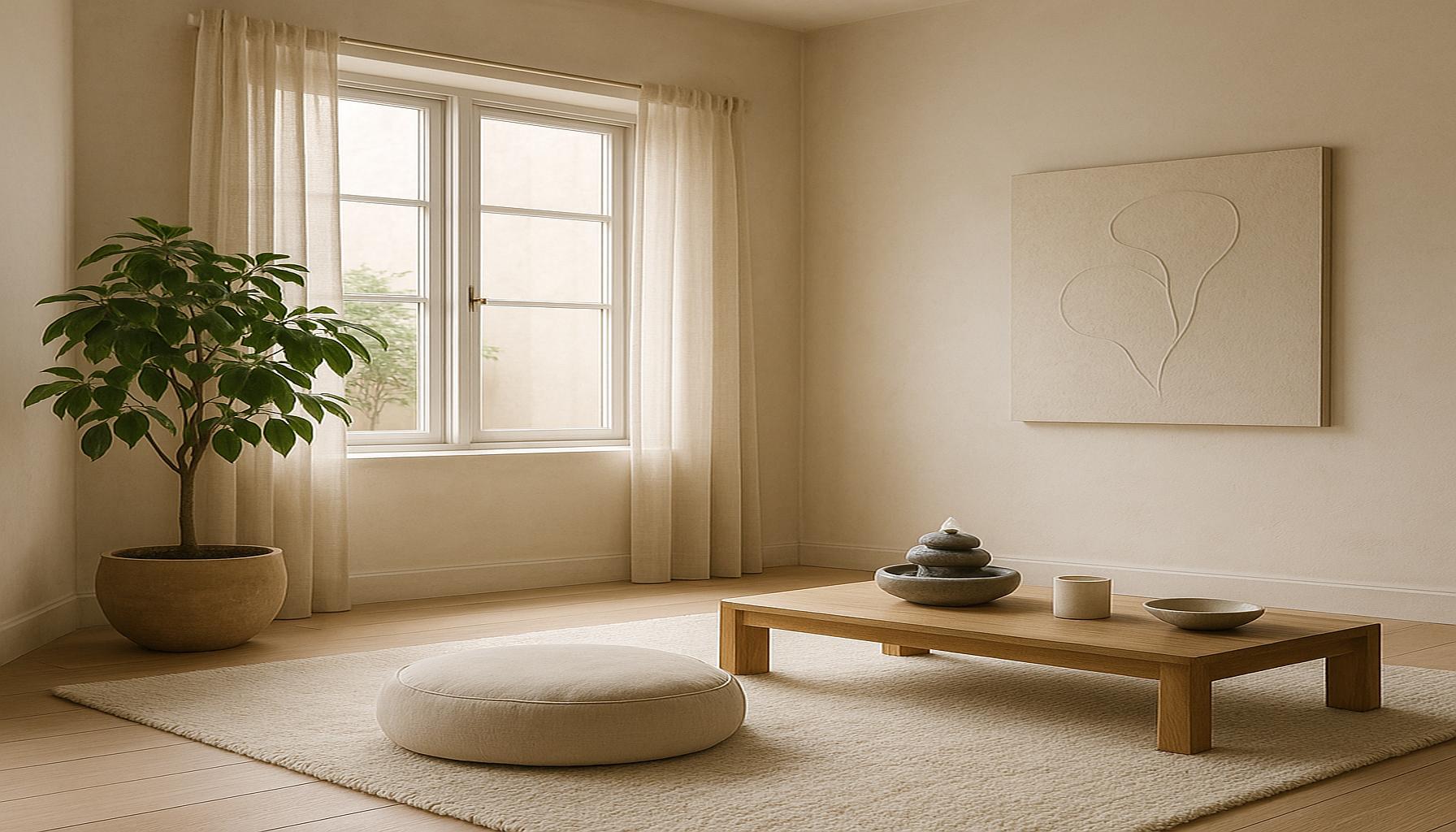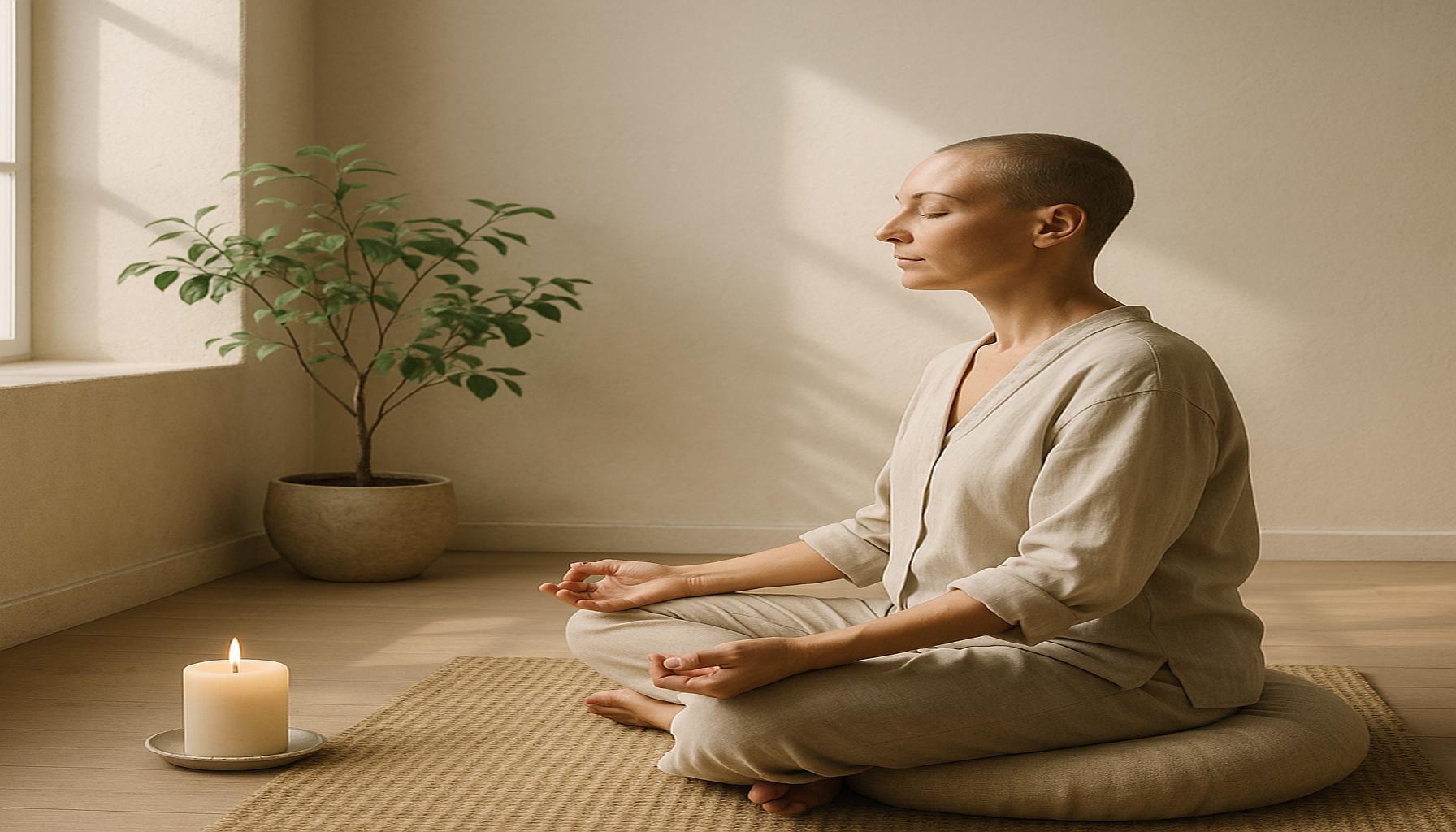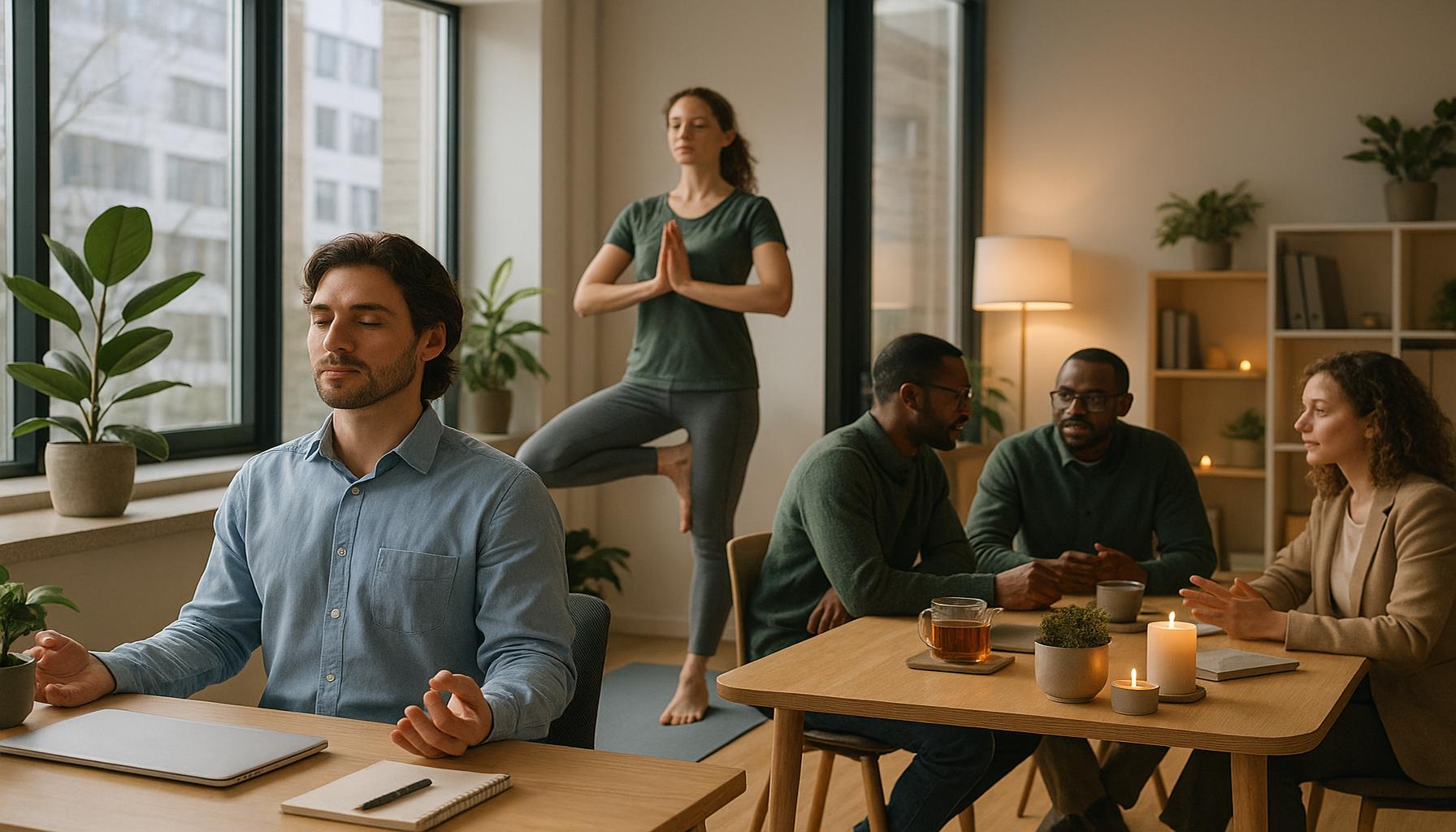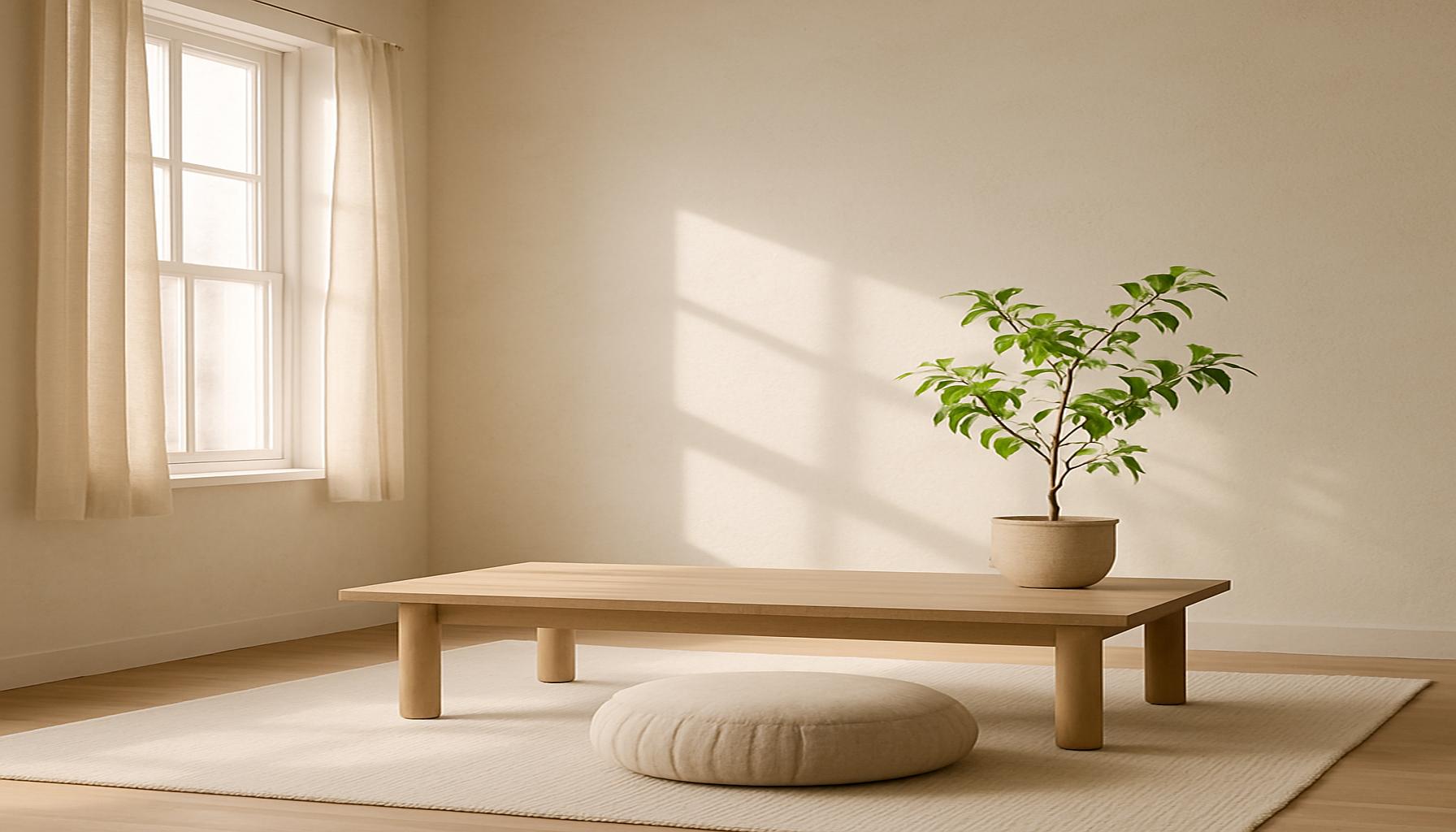Cultivating Mindfulness in Minimalist Environments: Tips for a More Zen Home

The Importance of a Peaceful Sanctuary
In a world where the pace of life often feels overwhelming, finding moments of tranquility can significantly enhance our mental and emotional well-being. Embracing mindfulness within a minimalist environment is a pathway to serenity that allows individuals to regain control amidst chaos. The core philosophy of minimalism revolves around making intentional choices in our belongings and activities, thereby promoting clarity in everyday life.
Minimalism is not merely a trend focused on decluttering; it represents a lifestyle shift aimed at embracing simplicity. By consciously choosing to surround ourselves with fewer and more meaningful items, we create a space that encourages us to appreciate the small joys of life rather than becoming mired in excess. Here are a few key benefits of minimalism worth exploring:
- Reduces Stress: Studies have shown that a clean, organized space can lead to reduced anxiety levels. For instance, a clutter-free workspace can enhance productivity and help individuals focus on their tasks without the burden of visual distractions.
- Enhances Focus: By minimizing distractions, one can improve concentration levels. A simple environment allows the mind to hone in on what truly matters, be it personal projects, work obligations, or creative endeavors.
- Promotes Inner Peace: The essence of a minimalist home cultivates a profound sense of tranquility. Spaces designed with intention — perhaps through soft colors, natural light, and open areas — can evoke feelings of calm and relaxation.
Transforming your living space into a sanctuary of mindfulness involves incorporating specific strategies that align with minimalist principles. Consider the following approaches:
- Engage in mindful decluttering: Take time to evaluate your possessions and eliminate items that no longer serve a purpose. This act can be liberating, allowing room for new experiences and thoughts.
- Utilize natural materials: Incorporating elements like wood, stone, and cotton can create a soothing atmosphere. These organic textures not only appeal to the senses but also resonate with the comforting aspects of nature.
- Create a designated space for meditation and relaxation: Even a small corner of your home can serve as your personal retreat. Decorate it with comfortable cushions and calming colors to foster a peaceful environment that encourages mindful practices.
As we delve deeper into the practice of mindfulness through minimalist living, we will uncover practical tips and insights to help you create a harmonious space that reflects your values. Prepare to see your home transform into a Zen-inspired oasis, where each element carefully contributes to nurturing your overall peace of mind. From curated decor choices to purposeful routines, the journey ahead holds the promise of profound simplicity and clarity.
DISCOVER MORE: Click here to simplify your life
Practical Steps to Establish a Mindful Space
Creating a home that embodies mindfulness is not just about reducing the number of objects within its walls; it is also about fostering an overall atmosphere that promotes calmness and focus. To achieve this, one can implement a series of intentional practices that align with minimalism while enhancing mental clarity. Each step towards a more mindful living environment serves as a brick in the foundation of your personal sanctuary.
One of the most significant steps to start this journey is to identify and create designated areas for various activities within your home. By establishing specific spots for work, relaxation, and creativity, you can condition your mind to associate each space with its intended purpose. Here are some suggestions for optimizing different areas:
- Workspaces: A minimalist desk with just a few essential tools can help maintain focus. Consider adding a single plant or a photograph that inspires you, creating a distraction-free environment that still feels personal.
- Relaxation Zones: Think about what calms you. For some, it may be a corner filled with soft cushions, while for others, a reading nook with a single, well-chosen book might suffice. Keep these areas clutter-free to enhance their tranquility.
- Creative Spaces: If art or crafting brings you joy, dedicate a spot for your materials. However, limit supplies to those you use regularly. This can spark creativity without overwhelming you with options.
Another critical component of fostering a mindful atmosphere is incorporating sensory elements that resonate with your personal preferences. Consider the sounds, smells, and textures within your space. For instance, soothing music or the soft rustle of wind through an open window can create a serene ambiance. Using essential oils, such as lavender or eucalyptus, can enhance the olfactory experience, calming the mind and promoting relaxation.
Furthermore, the aesthetic quality of your home plays a pivotal role in how you engage with it daily. Embracing natural light as much as possible can significantly uplift energy levels and encourage a positive mindset. Large windows that frame pleasing views or strategically placed mirrors to reflect light can breathe new life into your minimalist spaces.
As you implement these tips, regularly reassess your environment. Ask yourself: *Does this item or space bring me joy?* This question, inspired by the KonMari Method popularized by Marie Kondo, serves as a guiding principle for maintaining an environment that nurtures mindfulness. A home continuously aligned with your values creates a strong foundation for a more focused, peaceful life.
In the quest to cultivate mindfulness at home, remember that the journey is just as important as the destination. Total perfection is not the goal; rather, it is about creating a living space that reflects and enhances your inner calm. Embrace these principles to move closer to your vision of a serene, Zen-inspired home.
Cultivating Mindfulness in Minimalist Environments: Practical Tips for a More Zen Home
As we delve deeper into the world of cultivating mindfulness within minimalist environments, it is essential to understand how our surroundings can significantly impact our mental well-being. A minimalist home is not merely about reducing clutter; it’s about creating an atmosphere that promotes tranquility and fosters a deeper connection with our inner selves. Here are several practical tips to enhance mindfulness through minimalism.
1. Intentional Space Design
Design your home intentionally by considering the flow and energy of each room. Use minimalist furniture that serves a purpose and allows for easy movement. Natural light plays a critical role in creating a serene environment, so opt for sheer curtains that let sunlight in, invigorating your space and lifting your mood.
2. Mindful Decluttering
Engage in a mindful decluttering practice by evaluating each item in your home. Ask yourself if an object brings you happiness or serves a specific function. If not, consider letting it go. This process can serve as a valuable exercise in mindfulness itself. Embracing the art of letting go can be liberating and create a more peaceful environment.
3. Creating Zen Spaces
Incorporate designated zen spaces within your home, such as a meditation corner or a reading nook, where you can disconnect from the chaos of daily life. Adorn these areas with calming elements like plants, essential oils, or soft textiles that soothe your senses. Such spaces encourage you to pause and reflect, enhancing your mindfulness practice.
4. Embrace Natural Elements
Bringing nature indoors plays a significant role in cultivating a zen atmosphere. Incorporate indoor plants, natural materials like wood and stone, and earthy colors to ground your space. Research shows that exposure to nature significantly reduces stress levels and promotes emotional well-being. Consider adopting the principles of biophilic design to enhance your minimalist home.
5. Mindful Living Rituals
Create daily rituals that promote mindfulness and connection to your environment. This can include morning meditation, evening journaling, or simply enjoying your tea in silence. These rituals anchor you in the present and transform your home into a sanctuary of peace and reflection.
Minimizing our external distractions allows for greater self-awareness and a path towards a more contented life. By implementing these tips, you can cultivate an enriching and mindful living environment that resonates with your personal journey towards mindfulness.
| Mindfulness Tip | Benefits |
|---|---|
| Intentional Space Design | Promotes flow and energy, enhancing focus. |
| Mindful Decluttering | Fosters a sense of liberation and clarity. |
| Creating Zen Spaces | Encourages moments of relaxation and reflection. |
| Embrace Natural Elements | Reduces stress and boosts emotional well-being. |
| Mindful Living Rituals | Anchors you in the present and enhances mindfulness. |
DON’T MISS: Click here to discover how to simplify your mind for greater
Incorporating Mindful Practices into Daily Routines
Having established a peaceful and uncluttered environment, the next step in cultivating mindfulness is to integrate mindful practices into your daily routine. This not only enhances your living space but also transforms how you approach your life, ensuring that each day aligns with the serenity you’ve created at home. By infusing mindfulness into everyday activities, you can foster a deeper connection with your surroundings and your own well-being.
One effective practice involves mindful breathing. This can be especially beneficial in minimalist spaces, where distractions are minimal. Take a few moments in your designated relaxation zone to focus on your breath. Inhale deeply through your nose, allowing your belly to rise, and exhale slowly through your mouth. Doing this for just five minutes can ground you and nurture a sense of calm that permeates your day. It’s a simple yet powerful technique that can be employed anytime, especially before moving into a new task.
Moreover, consider engaging in a daily gratitude ritual. This could be as simple as writing down three things you are grateful for each morning. This practice not only shifts your mindset towards positivity but also reinforces appreciation for your minimalist environment. Reflecting on the beauty in simplicity can deepen your connection to your minimalist lifestyle while promoting a sense of tranquility.
Another innovative method is to organize mindful decluttering sessions. Instead of tackling your space all at once, set aside time regularly to assess your belongings. Use the mantra “less is more” to guide your decision-making. As you handle each item, consider whether it serves a purpose or holds a positive memory. This practice not only improves your physical surroundings but also contributes to your mental clarity, making it easier to embrace a mindful lifestyle.
Additionally, incorporating nature-based elements into your home can facilitate a deeper sense of mindfulness. Studies show that biophilic design—integrating nature into our living spaces—can enhance well-being. Simple additions such as potted plants, natural wood furniture, or even a small indoor water feature can have calming effects. Consider creating a small indoor garden or using natural materials for your décor. These elements serve not only aesthetic purposes but also act as daily reminders to connect with the natural world around you.
Furthermore, incorporating mindful eating habits can transform your meals into a practice of presence. Take the time to slow down during meals, appreciating each bite and the nourishment it provides. Practice eating without distractions—put away your phone and turn off the TV. By savoring flavors and textures, you enhance your dining experience while remaining grounded in the moment.
Finally, leverage the practice of mindful movement, such as yoga or tai chi, to foster a deeper connection to your body and your minimalist space. These activities encourage awareness of your bodily sensations and movements, creating a harmony between your mind, body, and surroundings. Such practices not only benefit your physical health but also reinforce your commitment to mindfulness throughout your living space.
By integrating these practices into your daily life, you create a holistic approach to mindfulness that complements your minimalist home. Each mindful action serves to reinforce the serene atmosphere you’ve cultivated, making every moment an opportunity for reflection and peace.
DISCOVER MORE: Click here to enhance your time management skills
Embracing Mindfulness in Your Minimalist Space
As we conclude this exploration of cultivating mindfulness in minimalist environments, it becomes clear that the relationship between our surroundings and mental well-being is profound. By creating a well-organized and serene living space, we lay the foundation for a more intentional and peaceful lifestyle. Engaging in simple yet effective practices such as mindful breathing, daily gratitude rituals, and regular decluttering sessions, empowers us to enhance not only our physical environment but also our mental clarity and emotional resilience.
Moreover, incorporating nature-based elements invites a sense of calm and connection that transcends the walls of our home. The integration of plants and natural materials serves as a gentle reminder of the beauty and serenity present in the natural world, urging us to pause and appreciate the moment. Pairing these elements with mindful eating and movement can transform mundane activities into opportunities for reflection, grounding us further in our pursuit of mindfulness.
Ultimately, the journey towards a more zen home is an ongoing practice that aligns with our values of simplicity and awareness. It is about making conscious choices that reflect our intentions and enhance our quality of life. As you navigate through this journey, remember that every small step counts. Embrace the potential for tranquility and clarity, allowing your minimalist environment to be both a sanctuary and a catalyst for deeper mindfulness. Transform your space; transform your mind.


